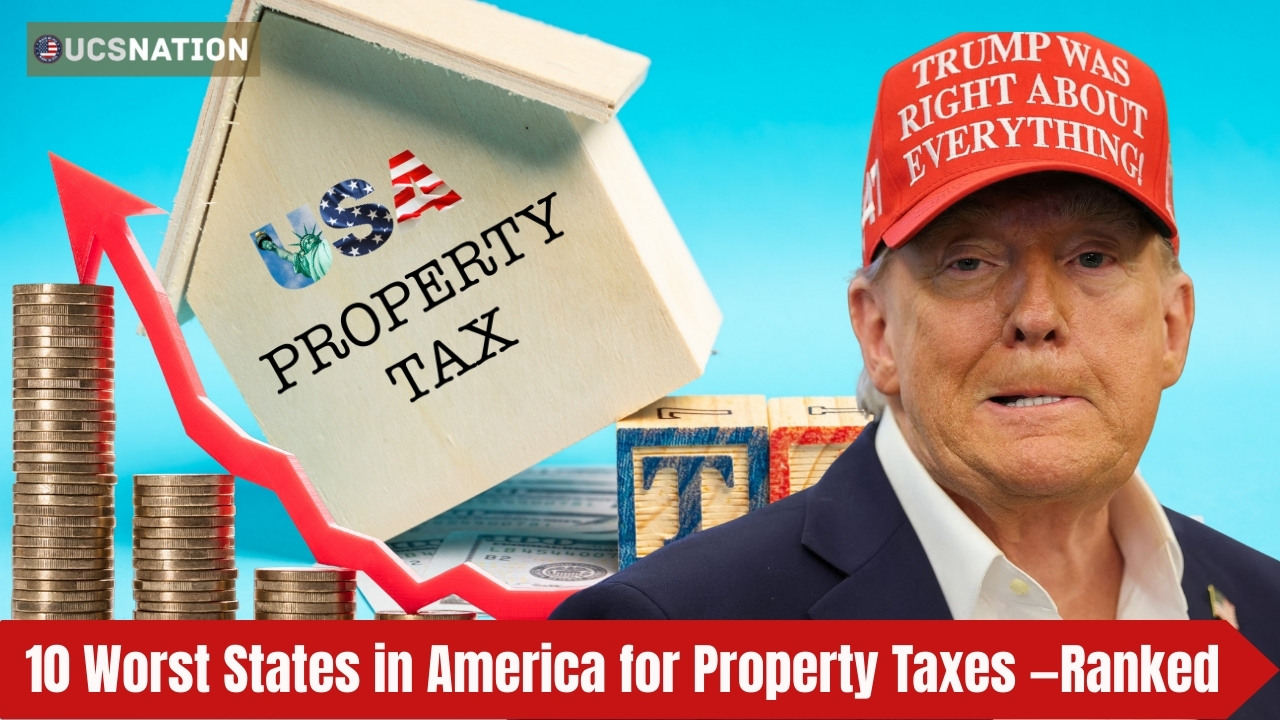Property taxes are a significant factor when it comes to homeownership, influencing affordability and overall cost of living. For many homeowners, understanding where property taxes are highest across the United States is crucial for financial planning and investment decisions. In 2025, certain states stand out for their particularly steep property tax rates, placing considerable burdens on residents.
This article explores the 10 worst states in America for property taxes in 2025. It details each state’s tax structure, how it affects homeowners in major cities, and what trends have influenced these rates over recent years. The analysis combines statistical estimates, economic factors, and regional nuances to provide a comprehensive overview for prospective buyers, residents, and real estate professionals alike.
Understanding Property Taxes and Their Impact
Property taxes are levied by local governments based on the assessed value of real estate, including land and structures. These taxes fund public services such as schools, infrastructure, emergency services, and local government operations. The amount paid can vary dramatically based on state laws, local assessment practices, and real estate market conditions.
High property taxes can impact home affordability in multiple ways. They increase monthly or annual housing costs, influence where people choose to live, and affect homeowners’ budgets for other expenses. For real estate investors, elevated property taxes reduce profit margins, influencing decisions on property acquisition and management.
States with the highest property tax rates often feature a combination of high home values, aggressive tax assessments, and robust local government funding needs. The following states represent the toughest environments for property tax payers in 2025.
New Jersey
New Jersey remains one of the toughest states for property tax payers. With an average effective property tax rate hovering around 2.2%, it surpasses many others across the country. Homeowners in cities like Newark and Jersey City face substantial tax bills, especially given the state’s high median home prices.
The high property tax burden stems partly from New Jersey’s reliance on these taxes to fund education and public services, combined with limited state income tax relief. Tax bills in suburban counties like Bergen and Morris are notoriously steep, posing challenges for middle-class homeowners.
Despite occasional proposals for reform, the state’s property tax rates have remained consistently high, contributing to a growing tax migration of residents seeking more affordable alternatives in neighboring states.
Illinois
Illinois also ranks near the top for property tax burdens. The average effective rate is approximately 2.05%, placing Illinois among the highest in the nation. The Chicago metropolitan area particularly suffers from high property taxes, with Cook County pushing tax bills into the thousands annually, even for modest homes.
Longstanding financial strains on local governments and school districts have pushed local officials to maintain high property tax rates to support services. In some Illinois suburbs like Naperville and Evanston, tax bills are a significant portion of household expenses, spurring residents to advocate for reforms.
The state’s complex property tax system, including multiple layers of taxing authorities, adds to the difficulty in addressing the issue comprehensively.
Texas
Contrary to popular belief that Texas has no state income tax, property taxes here are notably high. This state relies heavily on property tax revenue to fund local services. The average effective property tax rate in Texas is around 1.9%.
Cities such as Dallas, Houston, and Austin see some of the highest tax bills, fueled by rapid population growth and soaring home values. Texas does not impose state income tax, so local governments depend more on property taxes, making rates particularly steep.
Texas homeowners often face surprises when annual appraisals lead to significant increases in tax bills. The lack of strict statewide limits on property tax growth reactions sometimes fuels discontent among residents.
Connecticut
Connecticut’s property tax rates are among the highest across the northeast and the broader U.S. With an average effective rate near 2.11%, homeowners experience heavy tax burdens.
In cities like Hartford, Stamford, and New Haven, property taxes contribute significantly to the cost of living. The state’s dependence on property taxes for funding local education and municipal services exacerbates the situation.
Connecticut has implemented some property tax caps at local levels, but these have had limited success in lowering overall burdens, especially in wealthier suburbs where home values are high.
New Hampshire
New Hampshire is notable for having no general state income or sales taxes, but this advantage comes with a tradeoff: some of the nation’s highest property tax rates, averaging about 2.15%.
The property tax system funds local government and schools almost exclusively. Cities like Manchester and Nashua face very high property levies, which offset the absence of other taxes.
The state legislature has periodically debated tax reforms, but residents currently face some of the steepest property taxes in proportion to home values and income.
Vermont
In Vermont, property taxes average around 2.03%, putting it high on the list despite its peaceful rural reputation. Cities such as Burlington and South Burlington see residents struggling with tax bills.
The state’s funding model depends heavily on property taxes due to limited sales tax and other revenue streams. Vermont’s cold climate and challenging economic growth put pressure on local governments to maintain services, sustaining high property levies.
Concerns about affordability and out-migration are key issues related to Vermont’s property taxes, prompting discussions about caps and relief.
Nebraska
Nebraska, particularly outside its largest city Omaha, exhibits high property tax rates averaging approximately 1.92%. Counties like Douglas and Lancaster push property tax bills upward for homeowners.
The state relies heavily on property taxes for funding education and local government functions. Nebraska’s agricultural land valuations and residential property assessments both contribute to its elevated tax rates.
Tax relief efforts exist but face obstacles from budgetary constraints and political complexities. Homeowners in Lincoln and Omaha feel the pinch, especially as costs rise.
Wisconsin
Wisconsin’s average effective property tax rate is close to 1.91%, making it one of the states with higher property tax obligations. Residents in Milwaukee and Madison experience notable tax expenses.
Funding for public schools and municipal services is primarily sourced through property taxes, driving rates high. Wisconsin’s property tax system reflects the state’s commitment to local governance but creates challenges for homeowners on fixed incomes.
Efforts to reduce property tax burdens periodically arise, but limited state aid and growing municipal costs act as counterweights.
Rhode Island
Rhode Island, though the smallest state, imposes significant property tax rates averaging about 1.85%. Cities like Providence and Warwick contribute to high homeownership costs.
The small geographic size combined with high valuation in residential real estate elevates property tax burdens. Rhode Island’s reliance on property taxes for funding schools and towns keeps rates elevated.
The state has some local relief programs but struggles with balancing budgets while keeping taxes manageable.
Ohio
Ohio rounds out the list with average property tax rates near 1.75%, though certain counties and cities push rates higher. In metropolitan areas like Cleveland and Columbus, residents encounter substantial tax bills, particularly on more valuable properties.
Ohio’s approach to property tax includes caps on increases but still depends heavily on these taxes for local revenue. Public education funding and infrastructure projects drive demand for tax dollars.
Homeowners in Ohio face ongoing debates over tax fairness and balancing service funding with affordability.
Regional Trends and Economic Influences
The states on this list exhibit common themes. Most rely heavily on property taxes to fund education and local government services, often due to the absence or limitation of other tax revenue sources. Northeastern states like New Jersey, Connecticut, and Vermont consistently have higher tax rates, while some Midwestern states like Illinois, Nebraska, and Wisconsin also show elevated burdens largely driven by school funding needs.
Rapid population growth and rising home values in southern states such as Texas contribute to growing property tax bills despite moderate tax rates. States with no income tax tend to rely more heavily on property taxes, creating higher rates or assessments.
Economic factors such as stagnant wages, inflation, and increasing demand for public services amplify the challenges posed by high property taxes. These conditions contribute to affordability issues and migration patterns as residents seek states with more balanced tax environments.
Impact on Homeowners and Real Estate Markets
High property taxes weigh on homeowners by increasing ongoing costs and reducing discretionary income. In cities with expensive real estate markets, even moderate tax rates can translate into substantial dollar amounts.
Such tax burdens influence buyer behavior, with some opting for lower-tax states or cities. Investors compare tax rates closely when considering property acquisitions, as high property taxes reduce profitability and may slow market activity.
In some high-tax states, there is visible migration toward neighboring lower-tax states. This dynamic affects local economies, housing demand, and municipal budgets. Balancing property tax revenues with economic growth and population retention remains a significant policy challenge.
Potential Reforms and Future Outlook
Several states on this worst-property-tax list have ongoing discussions or initiatives to mitigate tax burdens. Proposals include caps on annual increases, shifting funding responsibilities, increasing state-level aid to local governments, and expanding tax relief for seniors and low-income residents.
However, broad reform efforts often face political hurdles and budget constraints. Property taxes represent stable revenue sources that municipalities depend on, complicating reform efforts.
Looking ahead, demographic shifts, economic conditions, and political will will shape the trajectory of property tax policies. States with the highest rates may seek creative approaches to preserve critical services while easing taxpayer burdens, but meaningful change will likely require sustained effort over several years.
Conclusion
In 2025, the landscape of property taxes in America presents notable challenges for homeowners in certain states. From New Jersey’s persistent high rates to the rapidly growing tax bills in Texas cities, these 10 states represent the toughest environments for property taxpayers nationwide.
Understanding these dynamics helps homeowners and prospective buyers navigate affordability and make informed real estate choices. While property taxes fund essential community services, balancing these needs with taxpayer capacity remains a complex and ongoing issue for policymakers and residents alike.













Leave a Reply